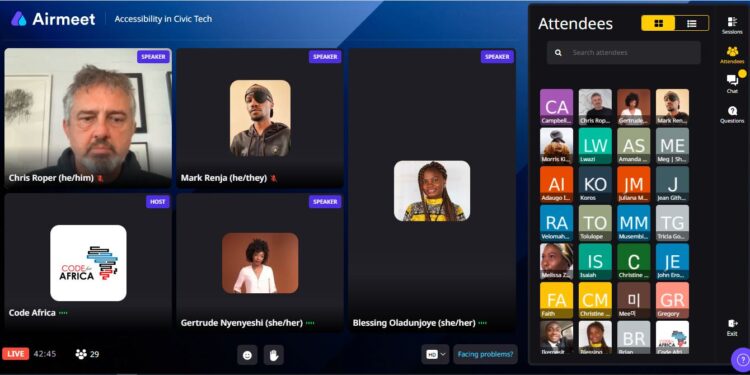Experts in technology and content development have called on journalist and tech experts to comply with the Web Content Accessibility guidelines to make website, tools and contents accessible for all users.
The call was made during a one-day online meeting in commemoration of Global Accessibility Awareness Day 2021, organized by Code for Africa, with the theme “Accessibility in Civic Tech.”
While speaking, Mark Renja, Project Manager Engagement at Code for Africa, described common inaccessibility features as contents without captions, transcripts (video or text) or alternative text that describe images.
“Page titles, URLs and menus that are poorly described poorly as well as Fonts and colour combination that make text hard to read.”
Giving recommendations on how to make websites, content and tools more accessible to all, Renja noted that, “add descriptions to images before posting them, and you can easily do this by imagining that you’re describing a picture to someone over the phone.
“Add captions to your videos, add transcripts to your audio, disable pop-ups and auto-play and add warnings before footage with a flashlight.”
Towards ensuring medium and long term digital accessibility, Renja advised that “teams and institutions can carry out accessibility audits and compliance, rules and processes and ensure accessibility is included at the stage of planning.”
Gertrude Nyenyeshi, a technologist at code for Africa, noted that “accessibility is a priority and should be included and considered during design, development and testing of a product or website because an accessible website significantly improves the experience of all users.”
Speaking about her personal experience, Nyenyeshi said, “accessibility has made me more empathetic and has improved the experience of my product,” adding that, “when you focus on accessibility, it increases the experience for everyone.”
Also on the panel, Blessing Oladunjoye, Publisher BONews Service stressed that “accessibility is for everyone and it is important for tech developers, media practitioners and content developers to remove every form of barrier that persons with disabilities could experience online.”
Oladunjoye quipped that “digital exclusion is another way of reinforcing barriers that PWDs are experiencing on a daily basis. Don’t add to challenges of PWDs by making your contents and digital tools inaccessible.”

